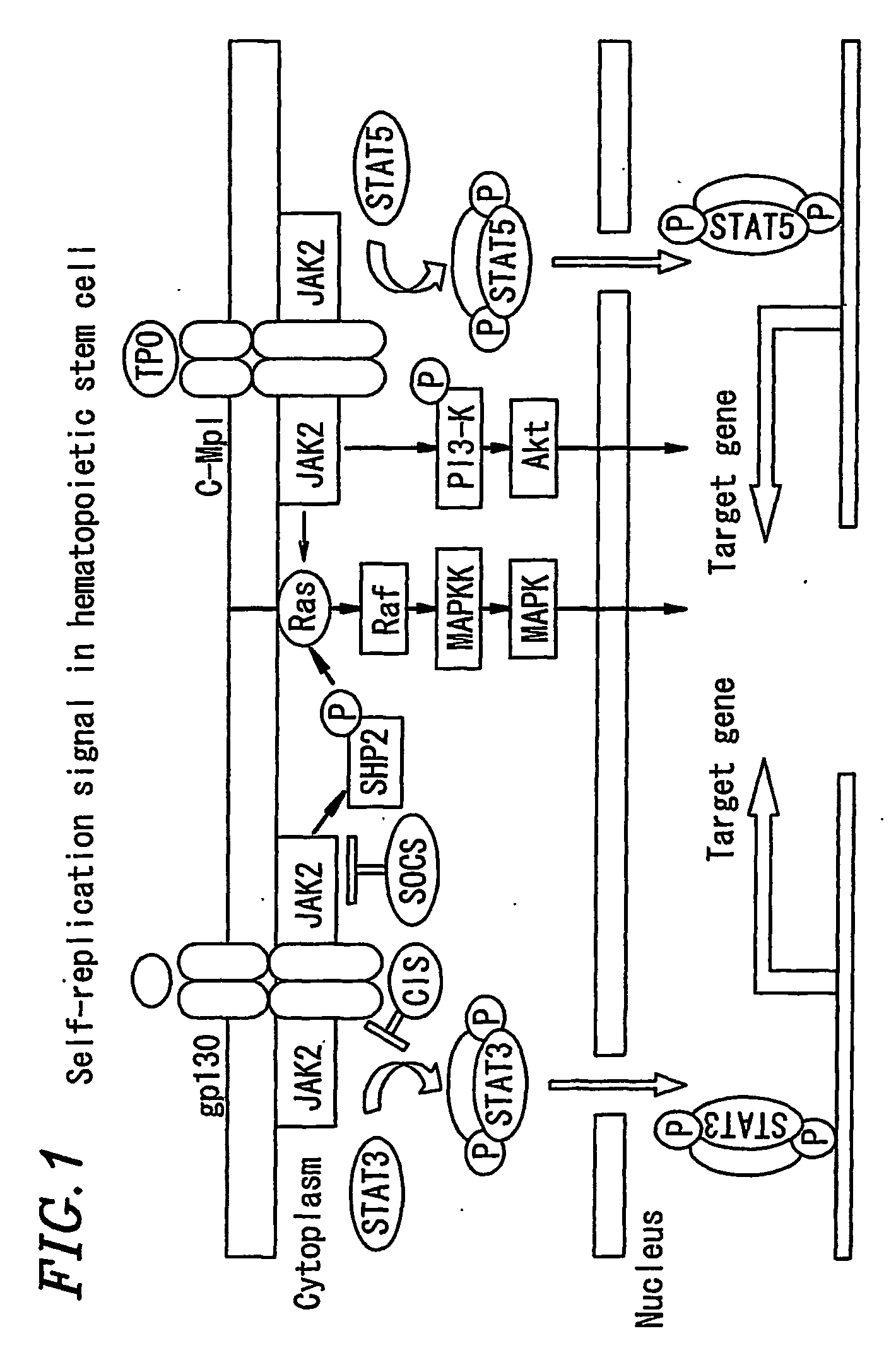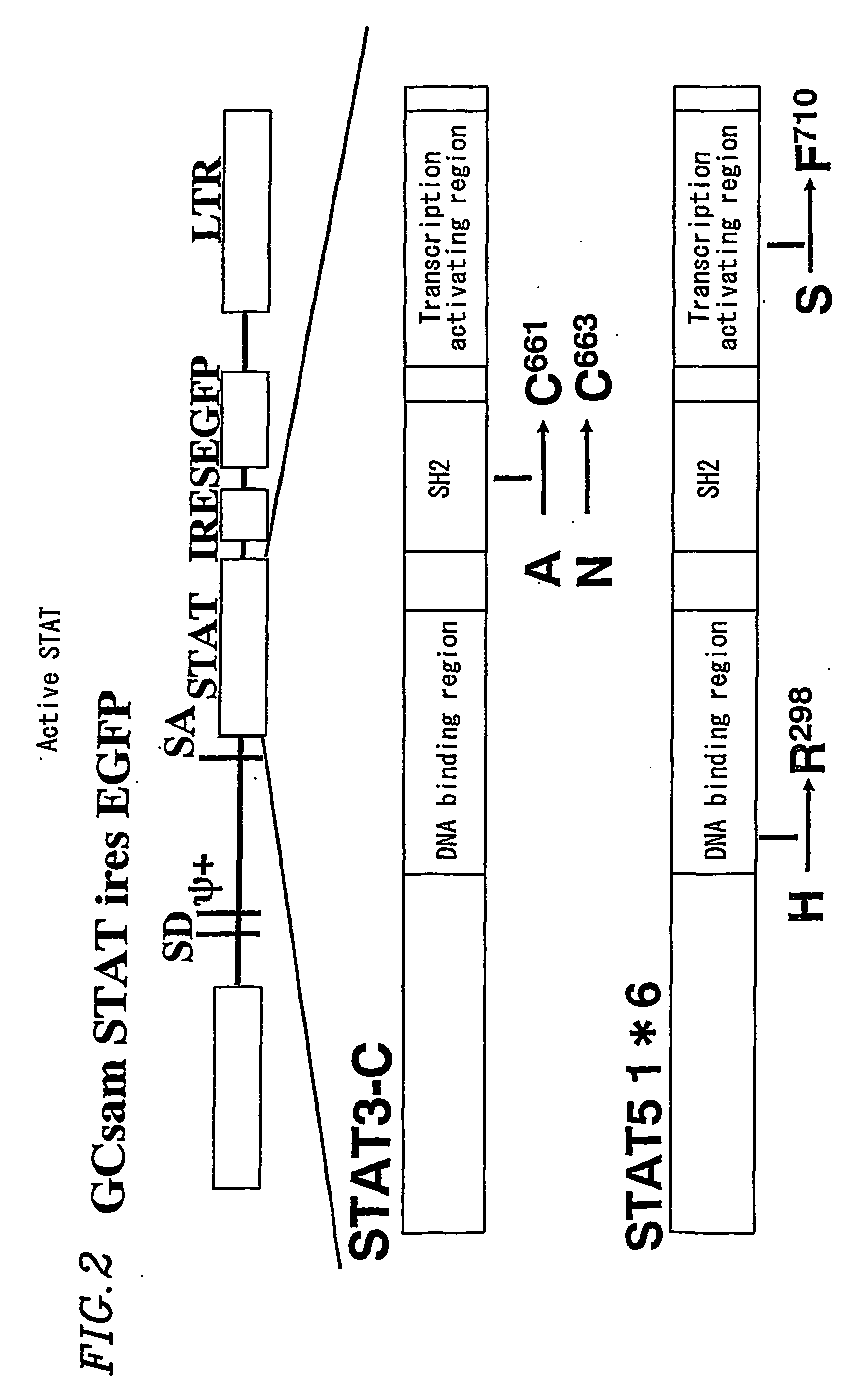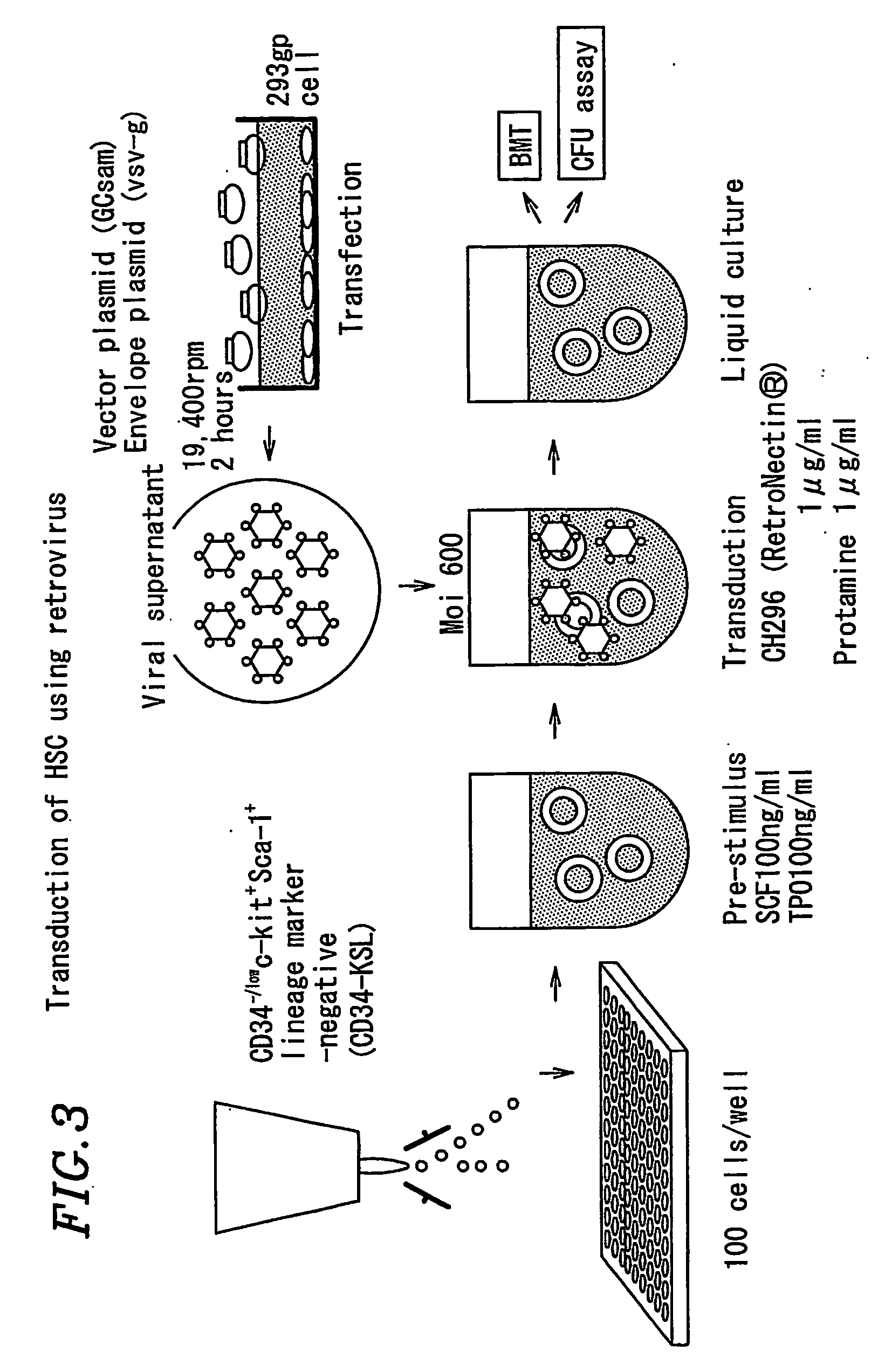Expansion agents for stem cells
a technology of expansion agent and stem cell, which is applied in the direction of peptide/protein ingredients, extracellular fluid disorder, peptide source, etc., can solve the problems of limited number of such patients treated, limited number of donors, durability, etc., and achieve the effect of maintaining pluripotency and self-replication ability
- Summary
- Abstract
- Description
- Claims
- Application Information
AI Technical Summary
Benefits of technology
Problems solved by technology
Method used
Image
Examples
example 1
Preparation of Retrovirus Vectors
[0387] In Example 1, a construct which is known to consistently form a dimer was used as active STAT5. The structure of the construct is shown in FIG. 2. The construct is called GCsam STAT IRES EGFP. This STAT5 is a variant of STAT5 (SEQ ID NO:9 (nucleic acid sequence) and SEQ ID NO:10 (amino acid sequence)), called STAT5A 1*6. It is advantageous that the variant consistently forms a dimer and thus consistently exhibits the activity of active STAT5.
[0388] A packaging cell, 293 gp cell, was transfected with GC-sam-STAT5A 1*6-IRES-EGFP (a retrovirus vector GCsam-IRES-EGFP having a STAT5A 1*6 gene inserted) or VSV-g (vesicular stomatitis virus G protein) envelope expression vector. Culture supernatant was collected (see FIG. 2).
[0389] Culture was carried out in Dulbecco's Modified Eagle Medium (DMEM) containing 10% fetal bovine serum (FBS), supplemented with 1× penicillin (100 U / ml), 1× streptomycin (100 μg / ml) in a humified 10% CO2 atmosphere at 37°...
example 2
Preparation of Cells
[0393] Bone marrow liquid was collected from 8-10 week old C57BL / 6 Ly5.1 mice, followed by specific gravity centrifugation to separate mononuclear cells (see FIG. 3). The mononuclear cells were stained using various monoclonal antibodies (anti-CD34, anti-c-Kit, anti-Sca-1, Lineage-marker mixture. (CD4, CD8, B220, Gr-1, Mac-1, and Ter119)). Hematopoietic stem cell fractions detected with CD34− / lowc-kit+Sca-1+Lineage-marker− (CD34−KSL) were plated onto 96-well multititer plates at a rate of 100 cells / well using a FACS Vantage cell sorter (Becton Dickinson). Serum-free culture medium X-vivo-10 (BioWhittaker) was used at a rate of 200 μl / well, supplemented with SCF (Stem cell factor) and TPO (thrombopoietin) as cytokines at a rate of 100 ng / ml for each (see FIG. 3).
example 3
Infection with Viruses
[0394] Hematopoietic stem cells harvested in Example 2 were cultured for 24 hours. Thereafter, the cells were infected with the enriched virus at an Multiplicity of infection (MOI) of 600. In this case, infection was assisted by addition of CH296 (RetroNectin (registered trademark): Takara Shuzo) and protamine (Sigma) at a rate of 1 microgram / ml for each. 24 hours after adding the virus, the cells were washed with 5 ml of X-vivo-10 and resuspended in medium containing SCF only or a combination of SCF, TPO and Flt3L (Flt3 ligand) (100 ng / ml), followed by culture for 7-9 days. The results are shown in FIG. 4.
PUM
| Property | Measurement | Unit |
|---|---|---|
| melting temperature | aaaaa | aaaaa |
| melting temperature | aaaaa | aaaaa |
| melting temperature | aaaaa | aaaaa |
Abstract
Description
Claims
Application Information
 Login to View More
Login to View More - R&D
- Intellectual Property
- Life Sciences
- Materials
- Tech Scout
- Unparalleled Data Quality
- Higher Quality Content
- 60% Fewer Hallucinations
Browse by: Latest US Patents, China's latest patents, Technical Efficacy Thesaurus, Application Domain, Technology Topic, Popular Technical Reports.
© 2025 PatSnap. All rights reserved.Legal|Privacy policy|Modern Slavery Act Transparency Statement|Sitemap|About US| Contact US: help@patsnap.com



